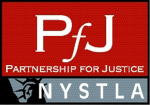 When it comes to determining and paying damages in a personal injury or medical malpractice lawsuit, it’s important to remember that there are some special rules and statutory provisions that come into play, depending on what state you’re litigating in. Here in New York we most frequently deal with Articles 50-A and 50-B of the CPLR, which set forth the basis for calculating and paying future damage awards. Under these provisions of New York law, which have been in effect since the 1980’s, a judgment for future damages is to be paid out in a series of future periodic payments funded by an annuity purchased by the defendant, as opposed to being converted to present value and paid in a single lump sum.
When it comes to determining and paying damages in a personal injury or medical malpractice lawsuit, it’s important to remember that there are some special rules and statutory provisions that come into play, depending on what state you’re litigating in. Here in New York we most frequently deal with Articles 50-A and 50-B of the CPLR, which set forth the basis for calculating and paying future damage awards. Under these provisions of New York law, which have been in effect since the 1980’s, a judgment for future damages is to be paid out in a series of future periodic payments funded by an annuity purchased by the defendant, as opposed to being converted to present value and paid in a single lump sum.
The determination of future damages usually presents the largest challenge in the courtroom since there are so many practical and economic factors that must be considered, giving rise to the risk that the award will end up being either oversized or insufficient for the plaintiff’s future medical needs. The approach for calculating and paying future damages varies widely from state to state, with some states, such as Georgia, legislating a specific discount rate of 5% that is to be used in reducing the amount of future lost earnings, benefits and household contributions to a present value, compared to states such as Connecticut, which provide no case law or statutory guidance, but merely invites testimony from economists based on whatever discount methodology seems appropriate at that time as a basis for calculation. (Click here if you would like to see a 50 state survey on the basis of calculating future damages prepared by the National Association of Forensic Economics.)
The New York rule, which we are most familiar with, presents something of anomalous approach inasmuch as there is no discounting of future losses whatsoever undertaken by the jury. The calculations used for discounting the award of future damages are quite complicated, together with additional provisions for determining a lump sum portion of the award, as well as adjustment for attorneys fees and litigation expenses, all of which is laid out in the provisions of NY-CPLR Articles 50-A and 50-B. The net result is of this determination is entry of a final judgment pursuant to which the plaintiff is entitled to receive a single lump sum payment consisting of the past damages portion of the award plus the first $250,000 of future damages. The defendant pays this lump sum in cash and then is obligated to buy a structured annuity to fund the remaining portion of the future damages award for the amount above the $250,000 included in the lump sum payment. These annuity payments are intended to cover the future awards for pain & suffering, medical expenses and lost earnings.
Over the years these provisions of New York law have received repeated criticism from both plaintiffs and defendants bar, and there have been continuing calls for further revision or repeal. As Dennis P. Glascott of Goldberg Segalla, and Lisa Diaz-Ordaz , counsel at Liberty Mutual Insurance, wrote in a recent issue of the New York Law Journal: “While the Legislature intended CPLR articles 50-A and 50-B to benefit both plaintiffs and defendants, the end result has been confusion and discontent to all parties, including judges.” The feature of the New York statute that is perhaps most disliked by the plaintiffs’ bar is the provision that requires in most cases that payment of future damage awards are discontinued when a plaintiff dies, rather than having the remainder of the annuity paid out to the plaintiff’s heirs or estate. This strikes us as anomalous and completely out of step with the approach in other jurisdictions, by requiring a plaintiff to forfeit a substantial portion of a damages award simply because the injuries sustained prove to be fatal sooner than anticipated.
In fact, as a matter of practice in New York, very few verdicts are actually paid in accordance with the provisions of CPLR 50-A and 50-B. As commentators have noted, “the paucity of reported cases under Articles 50-A and 50-B indicates that settlements are commonplace, notwithstanding the numerous opportunities these articles present for disagreement.” Thomas F. Gleason, Practice Commentaries to CPLR Article 50-A & Article 50-B (McKinney 2007).
Nonetheless, familiarity with Articles 50-A and 50-B is important to settlement discussions where future damages are involved, because a verdict is generally the best or worst case scenario (depending upon which side), and it is vital to know, at least in general terms, what winning or losing would entail. In our experience, in certain cases, it can be highly advantageous for a plaintiff to come to a mediation armed with a 50-A or 50-B analysis. That’s because in determining a settlement value at mediation, parties will often look at future damages as set out by an expert, and use a present value of those numbers as a basis for settlement value. And in fact, depending on a variety of factors, such as the applicable discount rate, the cost of funding the structured annuity under CPLR Rule 50-A or 50-B can actually be significantly higher than the present value of the future damages. This analysis can thus sometimes help provide a substantial financial incentive to the defendant to settle.
Some day these problematic provisions of New York law may end up being revised or repealed. But in the meanwhile, they remain one more important arrow in the quiver that we can and do use as part of our effort to drive settlement value for plaintiffs and their counsel.




